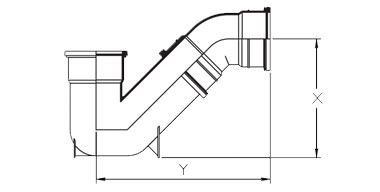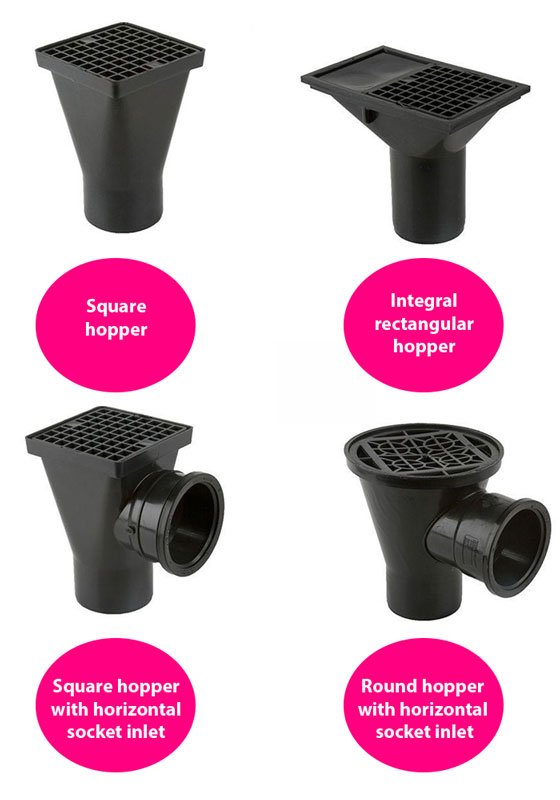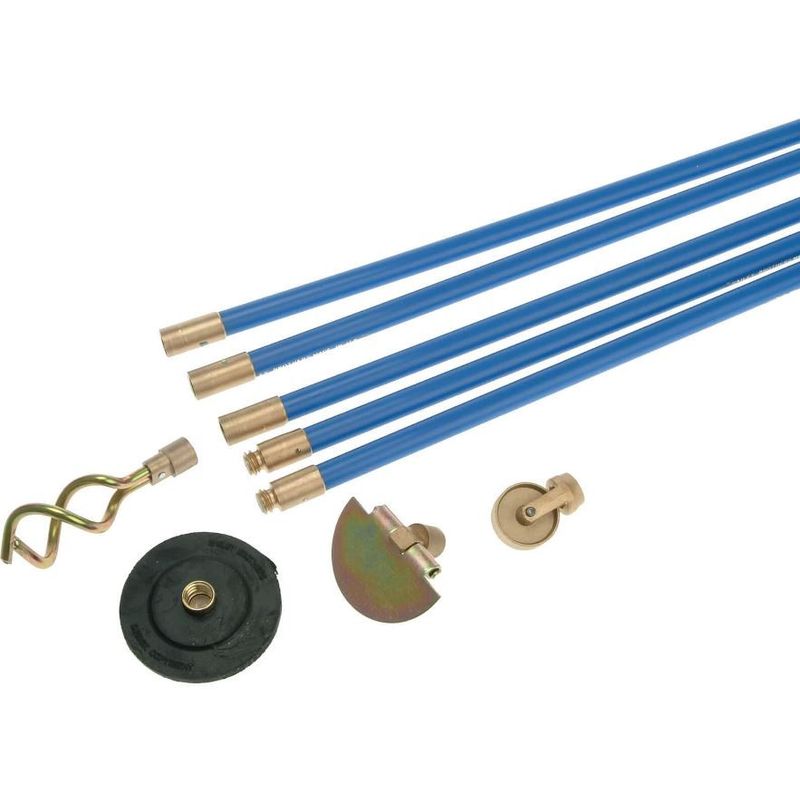Drainage gullies are incredibly useful. They’re very much needed for rainwater or grey water drainage. Without a drain gully, you can risk the systems getting blocked and potential floods.
In this guide, we’ll explain the importance of drain gullies. You can also discover the different sizes, types and more to make an informed decision about what you need.
Table of contents
- What are drain gullies and how are they used?
- What types of drain gullies are there?
- Gully trap sizes
- Which gully grating do I need?
- Gully trap hoppers
- How to unblock a gully drain
What are drain gullies and how are they used?
So, what is a drainage gully? Well, also known as gully traps, these ground-level drains are where rainwater and grey waste can discharge into.
There are many types of drainage gullies on the market. Regardless, the principal function remains the same.
Drainage gullies allow waste and stormwater to pass through easily. Thanks to this, it helps stop bad odours and rodents from escaping from out of the drains. They also catch roof and plant debris, preventing it from entering the mainline system and causing blockages.
What types of drain gullies are there?
The two main types of drainage gullies are the P trap and bottle gully. Both collect water from various surfaces and benefit a property by trapping gases and foul odours.
However, the design of the bottle gully means you can clean it out with a drainage rod. This makes it easier to clean and maintain than the P trap.
Road gullies are for a similar purpose, but their design can cope with the demands of high-traffic areas. This could be airports, motorways and car parks. They’re also typically fitted with a trap. This prevents sediment from entering the drainage system and stops unpleasant odours from escaping.
P trap drainage gullies
The P trap gully works by letting water into an inlet. This inlet, called a gully hopper, leads to a curved pipe before joining the main underground drainage system.
The P trap gully gets its name from the curved section. This section bears a resemblance to the letter P. This part of the gully traps the water and forms a barrier. This prevents odours and gases from escaping into the atmosphere.
There are two types of P trap gully; the 45-degree P trap gully and the 90-degree P trap gully. Both operate on the same principle and neither is roddable – the main distinction from a bottle gully. Both types of P trap gully need a drainpipe coupling to connect the gully to the drainpipe.

Bottle trap drainage gullies
Bottle gullies go by many names. Also known as yard, compact or universal gullies, they work on largely the same principles as P trap gullies. The main and most distinctive difference is that bottle gullies are roddable.
The central chamber within the trap is removable. This makes it easier to clean the gully. This means that it’s not always essential to call an expert to clean or remove blockages from a bottle trap gully. Instead, it’s something the homeowner can undertake.
Road drainage gullies
Although much larger than residential gullies, road gullies work in much the same way. As a guide, they tend to have 150mm-diameter outlets and can drain a maximum area of 250m2.
Modern road gullies use lightweight plastic units. These act as a liner for concrete casting. Once you’ve connected all the necessary pipework, use concrete for strength and resist deformation.
Road drainage gullies are larger than yard gullies and capable of handling a much heavier flow of water from roads. All road gullies must be held securely in place with concrete and each gully requires a specific type of grating.
Gully trap sizes
So, what is the standard size of a drain gully trap? Well, standard guttering sizes don’t exist, unfortunately. However, most gullies in the UK have a design that fits a 110mm pipe.
When it comes to inlets, you have a variety to choose from. Yard gullies, in particular, have a 300mm diameter and 600mm diameter invert. This ensures high performance, even at times of extreme weather.
Having said that, other options are readily available. As mentioned before, road gullies are typically larger. Complete with a 150mm-160mm outlet, 900mm invert and 450mm diameter.
You may also be wondering how deep a gully should be.
Your drainage gully must be at least 150mm below your property’s damp-proof course. It can go as low as 725mm below ground level or even more.
Which gully grating do I need?
While bottle gullies often come with the specified grid attached, P traps and road gullies tend to need separate grating. Grates are classified according to intended weight and the anticipated flow regime:
| Class | Test load | Uses |
| Class A | 15kN | Pedestrians and cyclists only |
| Class B | 125kN | Car parks and residential driveways – light, slow-moving traffic only |
| Class C | 250kN | Small commercial/industrial car parks, kerbside and service stations |
| Class D | 400kN | Carriageway use and all public highways |
| Class E | 600kN | Commercial and industrial heavy loads |
| Class F | 900kN | Exceptional loads, freight yards, airports and military |
The average patio drainage fitting can use anything from Class A upwards. Carriageway grates need at least a Class C.
These heavy-duty coverings are typically manufactured from ductile or cast iron. You can hinge them or completely remove them from their frames when you need to inspect the system.
Double-triangle gratings are recommended for use in high-speed traffic areas. This is due to their sturdy properties, making them less likely to cause problems.
Gully trap hoppers
Whether you’re using a P trap gully or a bottle gully, you’ll need a hopper. This will receive the water from above and funnel it into the trap.
It’s possible to join the hoppers to the gully traps with a length of pipe. However, this will depend on the depth the traps are set to.
Gully trap hoppers usually come with a grate attached. This prevents debris from entering the drain, reducing the risk of blockages.
There are also many different shapes of gully tray hoppers to choose from, including:
- Square
- Round
- Rectangular
Although the square is the most popular design, shapes are more likely chosen to fit with the outdoor design or paving.

How to unblock a gully drain
Unblocking a P trap gully
Due to the shape of a P trap gully, rods are not suitable. So you will need to contact a drainage specialist to unblock it using electro-mechanical pipe cleaning.
This method uses a flexible device that can be guided around the bend of the gully. It’s powered by electricity and has a rotating cutting head which can disperse blockages.
You cannot clear a P trap gully blockage by rodding. This is the P trap’s most significant drawback.
More often than not, you can unblock a gully trap using a flexible rod. This gets fed into the drain. The result is either breaking up the blockage or pushing it towards a manhole cover where for manual removal.
Unblocking a bottle trap gully
A bottle gully typically gives you much better access to the outlet pipe than a P trap gully.
Once you have removed the inner chamber, insert a drainage rod into the pipe to disperse any blockages near the bottle trap gully.
If a blockage has formed deep in the system, you may need to remove it using water jetting. You must contact a drainage specialist in this situation. They’ll guide a hose through the pipe to dislodge any accumulated material using high-pressure water.

As you can see, there are plenty of gullies to choose from. It’s making sure you choose the right one for your system. Unblocking a gully can be rather simple, too. So, make sure to analyse all your options and head on over to our range to check out what’s available to you.















